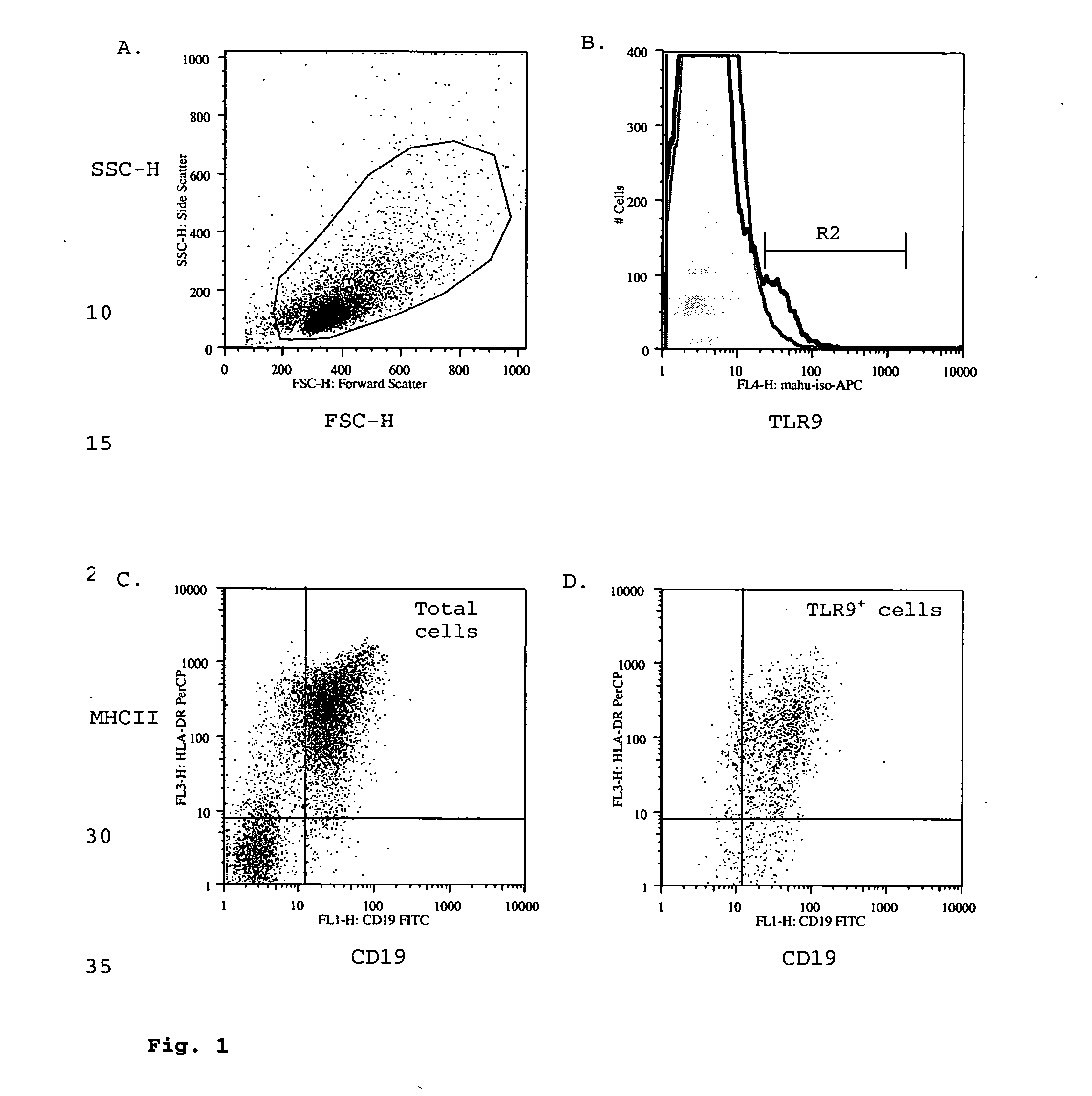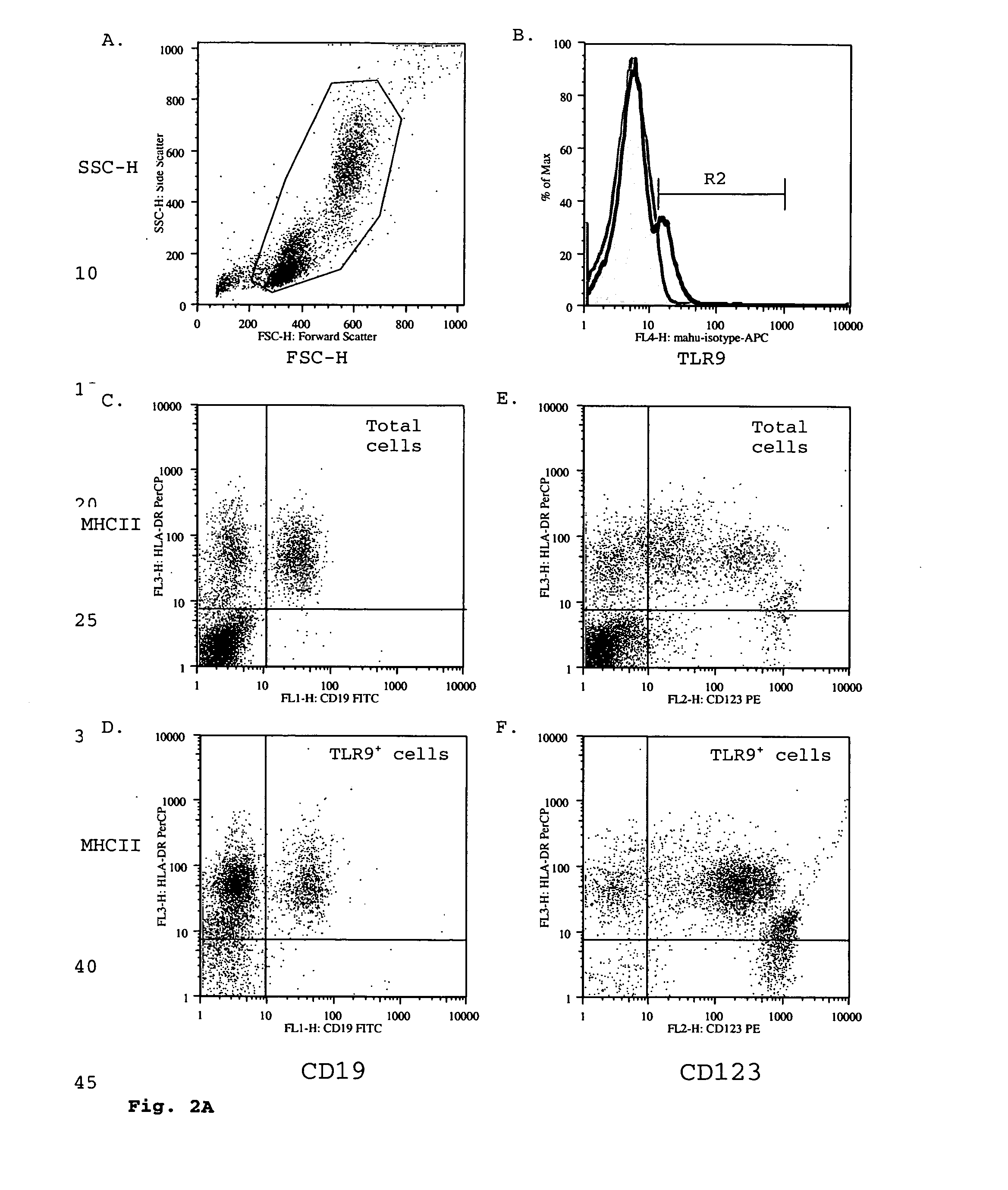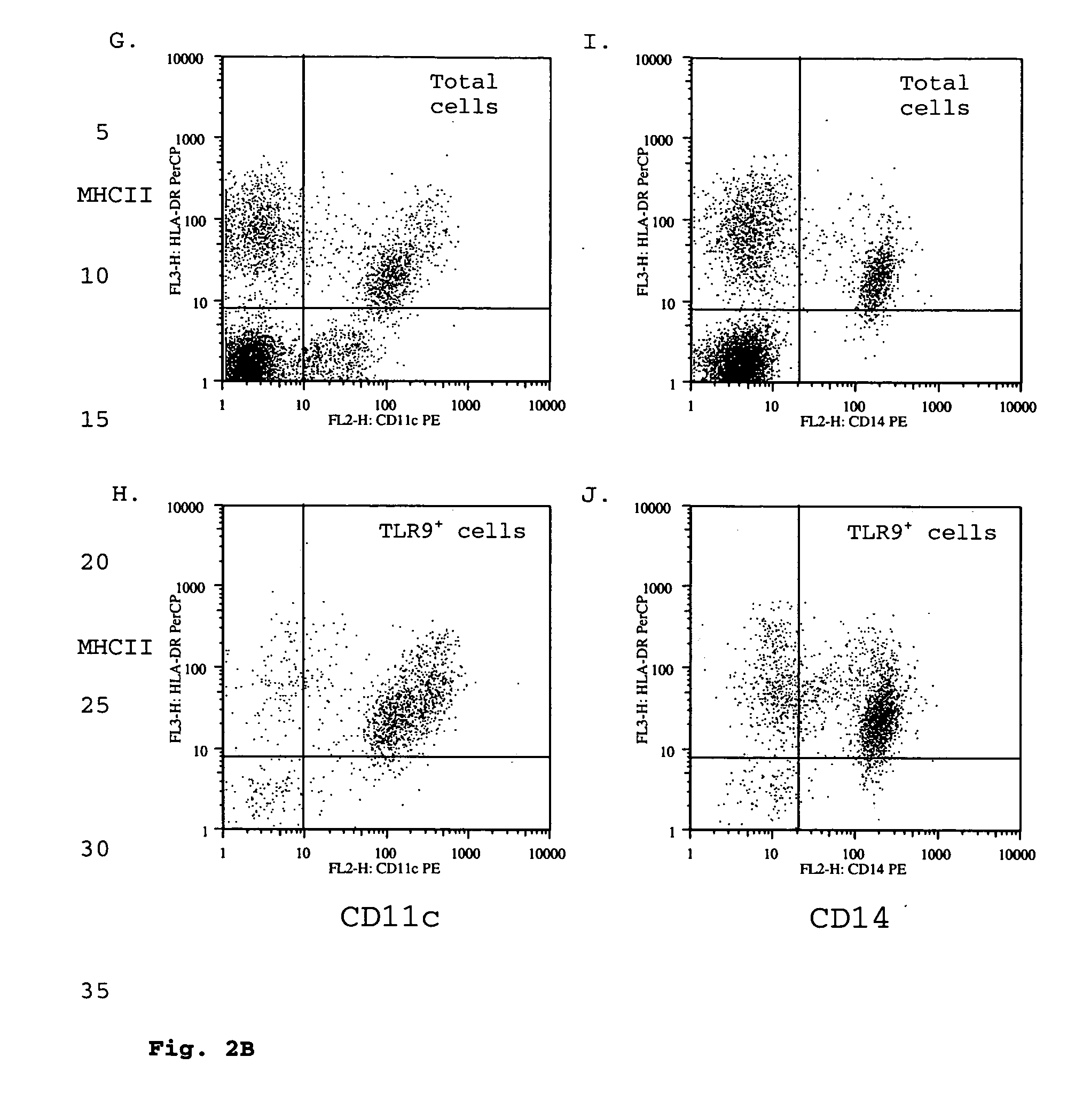Toll-like receptor 9 effector agents and uses thereof
- Summary
- Abstract
- Description
- Claims
- Application Information
AI Technical Summary
Benefits of technology
Problems solved by technology
Method used
Image
Examples
example 1
TLR9 Surface Expression in Tonsillar Cells
[0061] Human tonsil samples, harvested from pediatric donors, were obtained from the National Disease Research Interchange (Philadelphia, Pa.). Tissue samples were dissected into small pieces and incubated with 1 mg / ml Collagenase D (Boehringer Mannheim, Mannheim, Germany) for one hour at 37° C. Subsequently, samples were dissociated by passage through a cell strainer and then washed two times to remove the collagenase. One million cells were stained per condition for flow cytometry.
[0062] Cells were stained using a commercially available unlabelled mouse anti-human TLR9 mAb (Imgenix, San Diego, Calif.) followed by a goat anti-mouse IgG F(ab′)2-Cy5 (Jackson ImmunoResearch, West Grove, Pa.) detecting reagent for single color fluorescence. However, use of this secondary detecting reagent prevented multi-parameter staining with other mouse anti-human lineage marker mAbs. Therefore, for multi-parameter staining, the mouse anti-human TLR9 mAb w...
example 2
TLR9 Surface Expression on Peripheral Blood Mononuclear Cells
[0065] Human peripheral blood mononuclear cells (PBMC) were isolated from whole blood samples using Ficoll gradient centrifugation. One million cells were stained per condition for flow cytometry.
[0066] In FIG. 2, a dot plot depicting FSC-H and SSC-H of the PBMC samples is shown in (A). A histogram displaying TLR9 staining (bold open line where staining is marked by R2) relative to control levels of staining with an isotype control mAb (gray shaded area) is shown in (B). C-J show comparative dot plots of flow staining for the total cell population vs. the TLR9+ cell population (R2 gate) for MHCII and CD19 (C, D), CD123 (E, F), CD11c (G, H), CD14 (I, J) to elucidate the cell-surface phenotype of the TLR9+ cells.
[0067] In six experiments, TLR9 staining was evident on a subset of PBMC. The proportion of TLR9+ cells ranged from 1 to 13.3% of total live gated cells, relative to the isotype control (Table 2). To determine whi...
example 3
LPS Mediated Up-Regulation of PBMC TLR9 Surface Expression
[0068] Whole PBMC were cultured overnight in either media alone or in media containing 10 μg / ml of bacterial lipopolysaccharide (LPS). Following culture, TLR9 levels were analyzed via flow cytometry. Prior to LPS stimulation, 4.4% of the PBMC population expressed cell-surface TLR9 (Table 2). After 18 hours in culture, 6.9% of the control PBMC cultured in media alone and 10.9% of the PBMC cultured in LPS had detectable levels of cell-surface TLR9 (Table 3). Importantly, PBMC stimulated for 18 hours with LPS expressed approximately 4-fold higher cell-surface levels of TLR9 (159.4 Mean Fluorescence Intensity (MFI)) relative to those PBMC in media alone (40.7 MFI) (Table 3). These data demonstrate that activation of PBMC with LPS results in the upregulation of TLR9 expression. These data suggest a cross-regulatory mechanism of expression for TLR4 and TLR9, both of which have ligands that are derived from bacterial components.
T...
PUM
| Property | Measurement | Unit |
|---|---|---|
| Biological properties | aaaaa | aaaaa |
Abstract
Description
Claims
Application Information
 Login to View More
Login to View More - R&D
- Intellectual Property
- Life Sciences
- Materials
- Tech Scout
- Unparalleled Data Quality
- Higher Quality Content
- 60% Fewer Hallucinations
Browse by: Latest US Patents, China's latest patents, Technical Efficacy Thesaurus, Application Domain, Technology Topic, Popular Technical Reports.
© 2025 PatSnap. All rights reserved.Legal|Privacy policy|Modern Slavery Act Transparency Statement|Sitemap|About US| Contact US: help@patsnap.com



